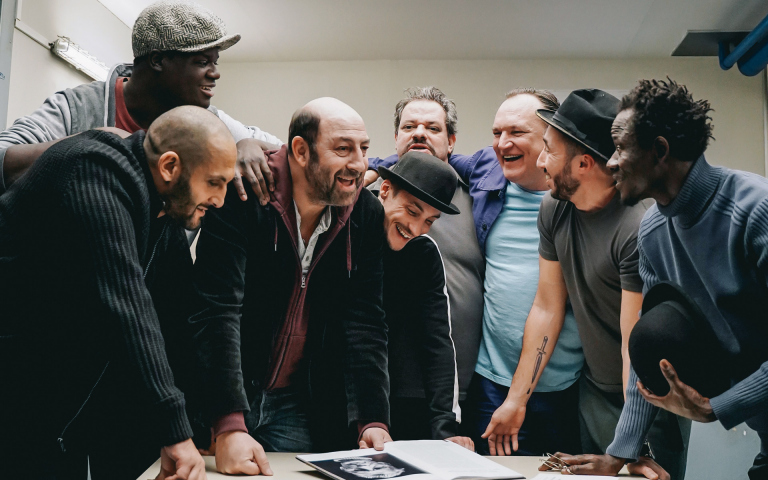
The Big Hit, the new feature film by Emmanuel Courcol, which benefited from the Paris Region Grant Fund, was partly filmed at the Meaux-Chauconin-Neufmontiers prison in Seine-et-Marne (77). An 8-day production within the prison itself, the first time ever for a fiction in France.
Synopsis
After his documentary made in the Meaux penitentiary in 2019, Emmanuel Courcol wanted to continue his work and deconstruct the stereotypes about prisons. He decided to write a fiction based on an incident that occurred in 1985 in Sweden: the actor and director Jan Jönson filmed Samuel Beckett's Waiting for Godot with the inmates of the Kumla high security prison. On the day of the public premiere in Gothenburg, five of the six actors escaped... With The Big Hit, Emmanuel Courcol transposes this story to modern-day France.
Key figures
-
people employed for the film
183
-
days of filming
42
-
locations in Paris Region
18
Filming in prison
The Audiovisual and Heritage Promotion Bureau at DICOM is in charge of relations with film crews. For Colombe Babinet, who is in charge of audiovisual productions, hosting film productions allows for "a contemporary and realistic image of French prisons to be presented to the public, and for the film crews to break down some common misconceptions.
The prison administration therefore responds positively to requests for filming works of fiction as long as they can be organized in compliance with the security conditions that are specific to prisons.
Given the reality of a prison: 24 hours a day, 365 days a year and the constraints related to security, some rules must be respected:
For the exteriors of the sites and the visiting rooms, which constitute the majority of filming requests, filming must be done outside of normal operating hours. For sequences concerning corridors, cells, collective areas or courtyards, filming is possible but must be done with a reduced crew.
In order to film in a prison, everything had to be planned down to the minute in order to respect the protocols that are applied in penitentiaries. Emmanuel Courcol and the production (agat Films) benefited from the expertise of Irène Muscari, cultural coordinator of the Insertion and Probation Service, to best organize the work plans.
The film crew was able to work in harmony with the prison management and the 900 inmates
Although it is rare to see inmates engaged in cultural activities on the screen and obtaining temporary absences, they are in fact quite frequent, as they constitute one of the important pillars in the reintegration of inmates.
In addition to the Meaux-Chauconin-Neufmontiers prison, the production also filmed in several Paris Region theaters: the Vesinet theater, the André Malraux theater in Rueil-Malmaison, the Jacques Prevert Cinema theater in Aulnay-Sous-Bois, the André Malraux Cultural Center in Kremlin Bicetre, the Marie Bell Gymnasium theater, and the Odeon Theater of Europe in Paris.
Numerous Paris Region service providers in the Film and audiovisual industry were called upon for this production, including the Tsf group (Tsf Camera, Tsf Light, Tsf Grip), Bear Grip Machinerie, D.C.A, Place To Be Media, Showroom Cinema and Transpalux.
